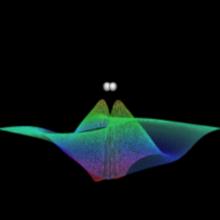
Description
This award supports a research program to model the coalescence of astrophysical black-hole binaries for different mass ratios and spins. The main focus is on the development and application of novel tools for numerical relativity and perturbative methods to assist the current and future gravitational wave detection efforts and to solve problems of current astrophysical interest. Recent breakthroughs have allowed numerical relativity to enter a new golden age of applications to astrophysics and gravitational wave data analysis. In particular, the numerical relativity group at the Rochester Institute of Technology (RIT) (and independently the NASA Goddard group) has developed a new technique, known as the "moving-puncture" approach, capable of stably evolving black-hole binaries from the inspiral phase (for at least several orbits) through the merger and ring-down phases. The main scientific objectives of the numerical relativity research program are to investigate: (i) some important open questions of physical interest about the details of highly nonlinear interactions, (ii) the generation of gravitational radiation, and (iii) astrophysical properties of unequal-mass, spinning black-hole binaries. To achieve these, this research will address some important challenges such as: (1) obtaining astrophysically relevant initial data for simulations that start from a realistic inspiral orbit, (2) exploring the large parameter space for different mass ratios and spins, and (3) ensuring that the multiple-orbit simulations themselves are accurate enough for both gravitational wave detection and the interpretation of the signals. On the computational side, the investigators propose to enhance their current computational framework (LazEv) to properly address these challenges. In addition, the "Lazarus" program to extract the gravitational radiation from late-time full-3D binary evolutions and evolve it with a stable and accurate 2D perturbative evolution will be extended in the framework of the moving punctures approach. Finally, an ongoing program will be extended to study the orbital decay of a small compact object orbiting a Kerr black hole.
Once detected, gravitational waves will open a new window into the universe. The coalescence of unequal-mass black-hole binaries with randomly oriented individual spins will be one of the strongest astrophysical sources of gravitational waves detectable by both ground-based detectors, such as LIGO, and the next generation of space-based detectors, such as LISA. In particular, LIGO is now taking data and its sensitivity is such that it is possible that gravitational waves from merging black holes will be detected in the next few years. This research will be of particular importance to LIGO since its goal is to produce gravitational waveform templates to be used for gravitional wave data analysis. This award provides important resources to support a new research-intensive program in numerical relativity at the Center for Computational Relativity and Gravitation (CCRG), recently created at the RIT. The CCRG will provide a new research environment in which students are exposed to cutting-edge research and technology. These students will learn critical skills in operating massively parallel computers, high performance computing and code optimization, visualization of complex 3-dimensional data, as well perform cutting edge research in strongly gravitating systems.